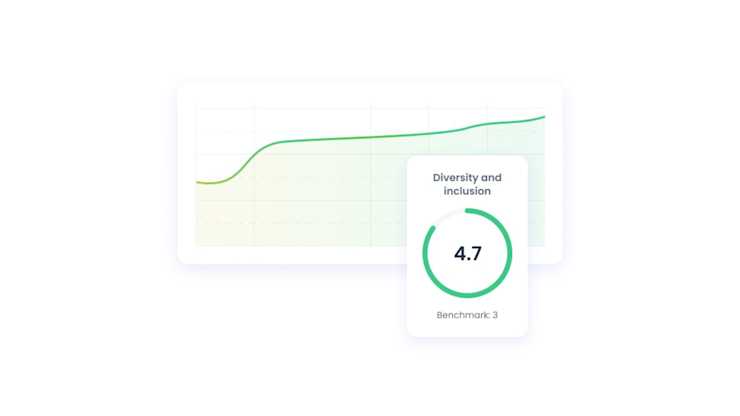What is inclusive language in a recruitment context and why is it so important? Writing inclusive job descriptions and job adverts will not only help you build a more diverse and inclusive workplace, it will also increase your talent pool and help you hire qualified candidates.
Attracting a diverse workforce is integral to business success. Diverse teams perform better, people working in inclusive workplaces are more engaged, and truly inclusive workplaces see increased employee retention. A recruitment process based on equitable practices not only helps build an inclusive and positive corporate culture, but also has tangible effects on the quality of work.
According to a Deloitte's report, companies with greater diversity in the executive committee tend to be more competitive, with a 40% higher likelihood of financial outperformance. To execute a successful recruitment process and promote inclusion and diversity, it's important to consider the language used.
What is inclusive language and why does it matter?
Inclusive language is a language that avoids stereotypes and biases by avoiding assumptions and employing the use of gender-neutral words. Inclusive job descriptions and inclusive language in job ads is essential to making people feel like they are accepted and appreciated. It's therefore paramount for employers to pay attention to the language used within job descriptions, recruitment materials, and conversations with potential candidates. It not only prevents potential discrimination but also helps ensure that your organisation is able to build an inclusive and diverse workforce.
Inclusive language also extends to other non-verbal ways of communicating, such as illustrations and photos. Employers should also be mindful of what images are used in their recruitment materials, to ensure they're not reinforcing stereotypes and biases. Diverse and representative imagery can help create a more inclusive environment and ensure that all potential candidates feel welcome to apply.
Avoiding unintentional biases in job listings
Job ads that effectively communicate the requirements of a role can help draw a wide range of candidates. However, this is only likely to be the case if they are written in an accessible and clear way that avoids unintentional bias.
It's important to be aware of wording, and for example, avoid gendered language. The use of unisex titles is recommended to ensure that job descriptions remain unbiased. The goal should be to use inclusive language in recruitment ads as well as to use inclusive language in job descriptions. This includes avoiding any language that could be interpreted as exclusive or discriminatory. Using gender-neutral pronouns and avoiding language that could be seen as overly masculine or feminine is important to ensure job postings are free from unintentional biases and attract a diverse range of applicants.
Examples of how to use inclusive language in job ads, job descriptions, and job interviews
Consider alternatives to “years of experience”
Avoid terms like "native English speaker" as a qualification
Avoid language that may discourage people with disabilities from applying
Focus on qualities and skills over specific education
Avoid gendered language such as "guys" or "ladies" when addressing groups, and opt for gender-neutral terms like “folks,” “people,” “y’all,” or “team,” instead.
Use personal pronouns when introducing yourself, in your email signature, and in your social media profiles.
Ask for and use each individual's preferred pronouns.
Avoid referencing age if not absolutely necessary.
Gender-neutral language in recruitment
Unfortunately, stereotypes can often play a role in diverting potential candidates from applying for jobs. Instead of terms such as “he/she”, it's best practice to use gender-neutral language such as “they/them” when writing job postings. Similarly, alternatives to phrases like “salesman/saleswoman” should be used, and any qualifications listed should be free from any gender-biased terms.
Ensuring that job postings are free of gender-coded language allows employers to give equal opportunities to male, female, and non-binary candidates. This helps create a level playing field where every candidate is equally encouraged to apply.
Communicating with candidates in an inclusive way
Ensuring that communication with prospective employees is free from any excluding or offensive language is essential to creating an equitable recruitment process and positive candidate experience. Employers should be mindful to not ask questions or make comments that assume people’s politics, sexual orientation, race, or religion.
However, a diverse workplace is about much more than just inclusive communication. The fact that diversity is celebrated should be clear to potential recruits through actions as well as words: cultural observances, allowances for religious holidays, and flexible vacation arrangements are just a few of the ways employers can show their commitment to building an inclusive workplace.
Sharing company values and guidelines when it comes to DE&I early in the recruitment process is also a great way to make all candidates feel safe. This can, for example, include official anti-discrimination policies. Building a recruitment team of professionals from diverse backgrounds, of different genders, ages, and cultures, is also important to improve the recruitment process.

Measuring diversity and inclusion in the workplace
Inclusive recruitment helps break down barriers to social mobility while at the same time giving your organisation a competitive edge. Inclusive language is one part of building Diversity, Equity, Inclusion and Belonging at work, but to fully succeed, DEIB needs to be a continuous focus in all parts of the organisation. And you know what they say, what gets measured gets managed. That's why Eletive offers plug-and-play Diversity & Inclusion surveys, to help organisations continuously monitor and improve the state of DEIB.

























